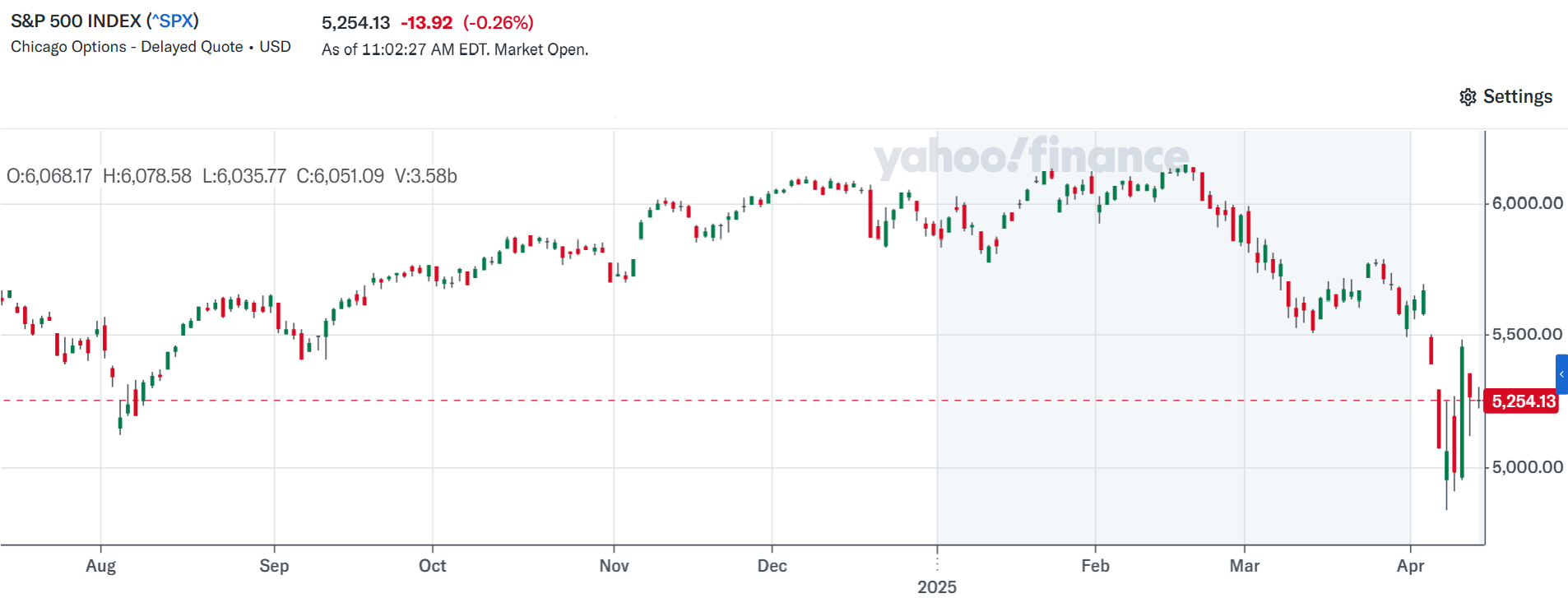A Sudden Shake of Global Markets
On April 2, 2025, President Trump declared sweeping tariffs ranging from 10% to 50% on all imports, with even higher rates targeting specific countries. For example, an initially announced 34% tariff on all Chinese imports quickly escalated as reciprocal measures were introduced, eventually reaching 145%. This unexpected move sent shockwaves through global markets. U.S. stocks plummeted on the first day alone: the S&P 500 fell by 3.9%, Nasdaq 100 futures dropped 4.7%, and Dow Jones futures declined by 2.7%. International markets mirrored this turmoil, with Japan’s Nikkei 225 falling 2.8%, and Europe’s FTSE 100 and CAC 40 declining by 1.6% and 3.3%, respectively.*
In the following days, markets continued to slide. The S&P 500 ultimately dropped by 15%, while the Nasdaq fell 17%. Japan’s Nikkei 225 lost 13%.* However, the causes of these downturns extend beyond just the tariff hikes and fears of a global recession. A major factor was the unpredictability of President Trump’s economic policies, despite such actions being indicated during his election campaign. This is underscored by the behavior of the Volatility Index VIX, often referred to as the market’s “fear gauge,” which surged from its typical 10–20 range to above 50, a level last seen at the start of the COVID-19 pandemic.

Source: Yahoo Finance
Policy Reversal and Market Rebound
In a surprising twist on April 9, President Trump announced a 90-day delay on most of the newly imposed tariffs, with the stated goal of negotiating better trade deals for the United States. This partial reversal sparked a dramatic market rebound. The S&P 500 surged by 9.6%, marking its best single-day performance since 2008. The Nasdaq Composite jumped 12.2%, its largest gain since 2001, while the Dow Jones Industrial Average rose 7.8%.*
However, the relief proved short-lived. On April 10, the administration clarified that certain tariffs would remain in place, particularly those on Chinese goods. This announcement reignited investor concerns, causing another wave of declines: the S&P 500 dropped 3.6%, the Dow fell 2.5%, and the Nasdaq declined by 4.31%.*
Investor Strategies Amid Uncertainty
The rapid shifts in policy and the resulting market volatility have forced investors to reassess their strategies in search of stability. Many have turned to traditional safe-haven assets such as gold and U.S. Treasuries. Others are diversifying their portfolios, increasing exposure to defensive sectors, and exploring hedging strategies to manage risk more effectively.
As the global economy continues to navigate this turbulent period, market participants must remain cautious and flexible. The evolving trade landscape demands careful attention, especially as Trump’s tariff policies remain a dominant market driver with significant downside potential for both global economies and equity markets.
* Past performance is no guarantee of future results.




